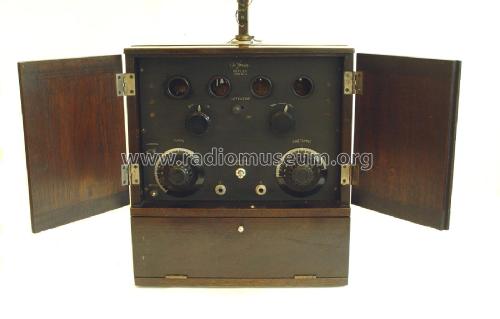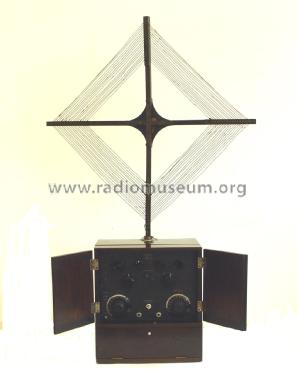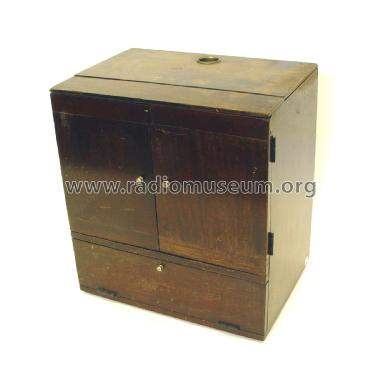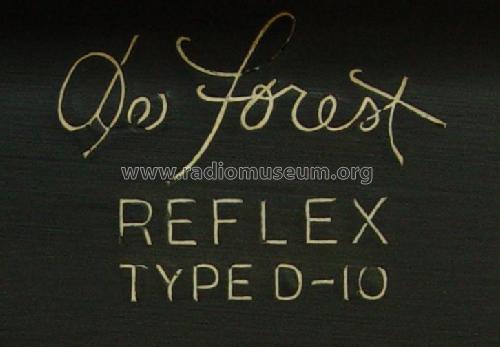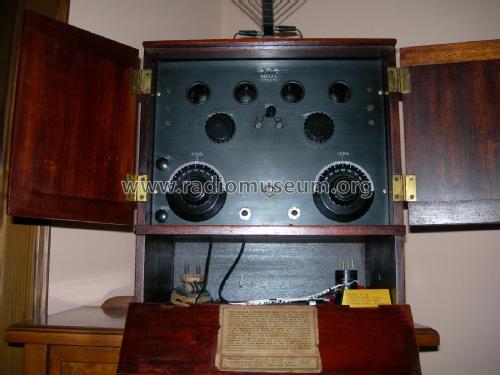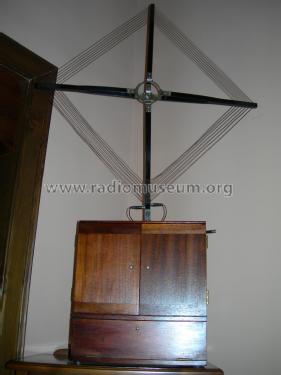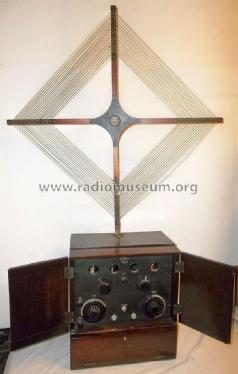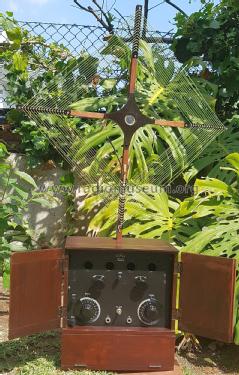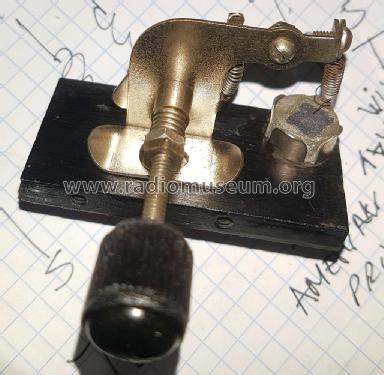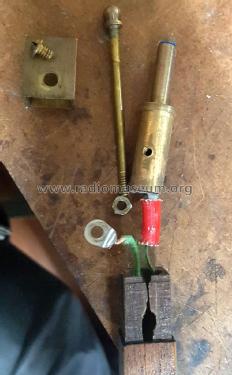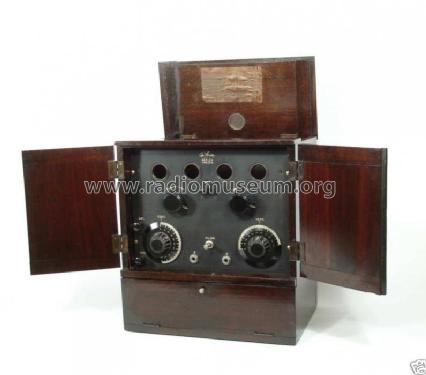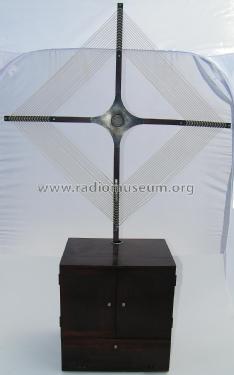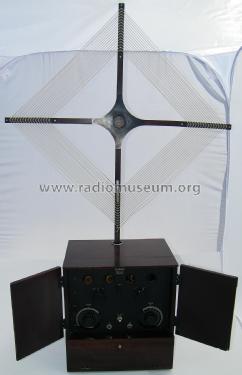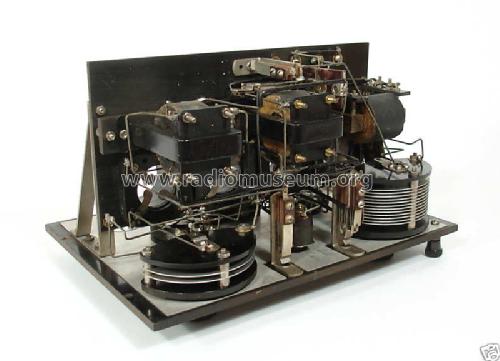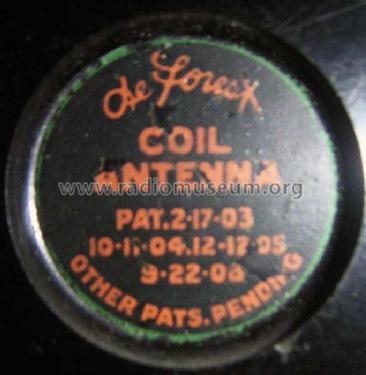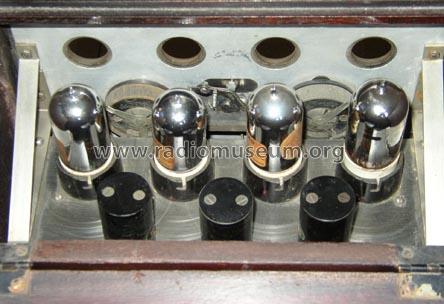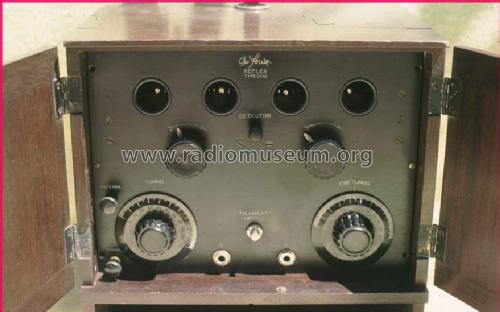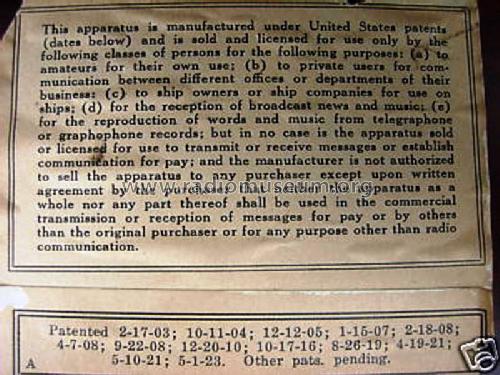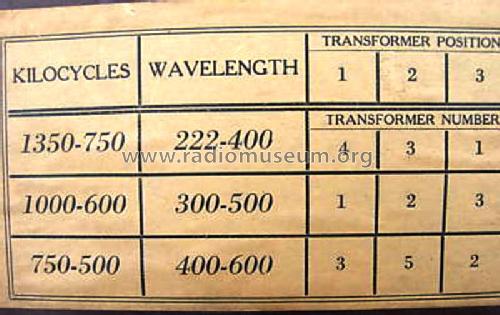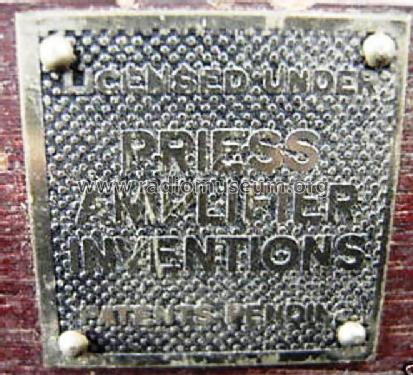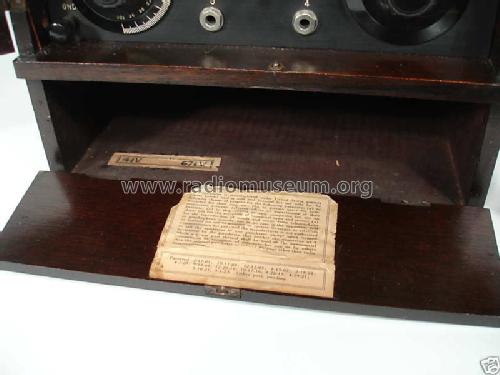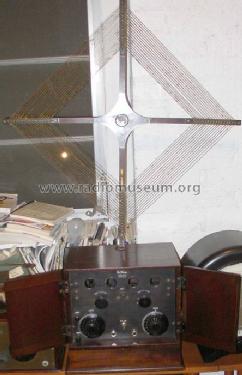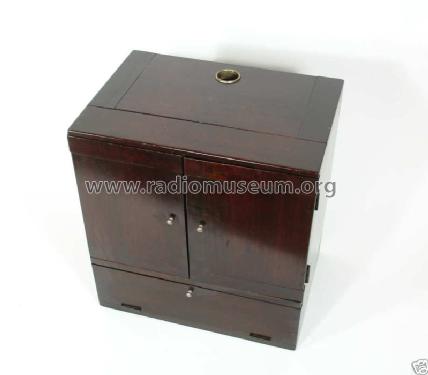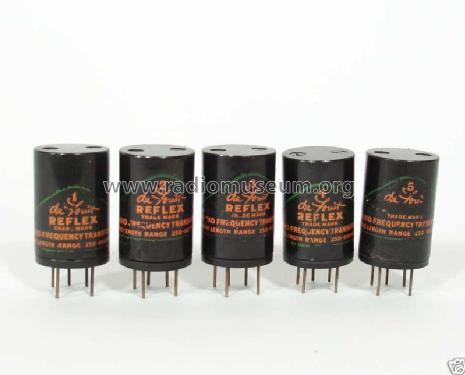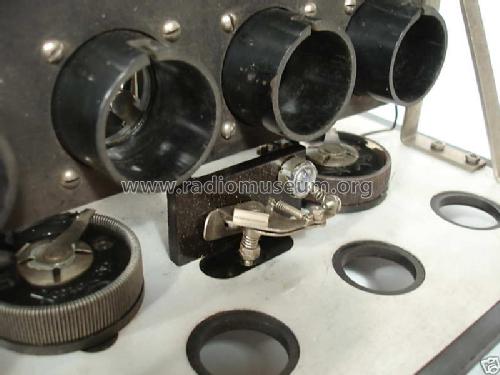- Pays
- Etats-Unis
- Fabricant / Marque
- DeForest Radio Telephone & Telegraph Co. (De Forest); New York
- Année
- 1923
- Catégorie
- Radio - ou tuner d'après la guerre 1939-45
- Radiomuseum.org ID
- 37074
-
- alternative name: Lee De Forest Mfg.
Cliquez sur la vignette du schéma pour le demander en tant que document gratuit.
- No. de tubes
- 4
- Principe général
- Récepteur TRF en général (avec ou sans réaction inconnu); FI/IF 3 kHz; 3 Etage(s) BF; Reflex
- Circuits accordés
- 1 Circuits MA (AM)
- Gammes d'ondes
- PO uniquement
- Tension / type courant
- Piles sèches / 4.5 & 67.5 Volt
- Haut-parleur
- - Ce modèle nécessite des HP externes
- Matière
- Boitier en bois
- De Radiomuseum.org
- Modèle: D10 - DeForest Radio Telephone &
- Forme
- Modèle de table boitier avec vouvercle
- Dimensions (LHP)
- 320 x 350 x 230 mm / 12.6 x 13.8 x 9.1 inch
- Remarques
-
One dial (primary tuning control knob). The D-10 is a 4-tube reflex receiver, using a crystal detector. Either Frank Squire or William Priess (the self-proclaimed "father of reflex") developed the D-10, although Gernsback gives credit for the invention of reflex to Marius Latour. In the D-10, two tubes have both RF and audio amplification functions. So, the receiver performs as a 6-tube radio (three stages of RF amplification and three stages of audio amplification) seven if the detector is considered. Reflexing is a rather sophisticated electrical design technique, since the interstage RF and audio transformers are arranged so that a single tube can perform two functions. For more information see "Antique Radio Classified" Volume 14, August 1997.
- Poids net
- 7.2 kg / 15 lb 13.7 oz (15.859 lb)
- Prix de mise sur le marché
- 150.00 $
- Source extérieure
- Ernst Erb
- Source du schéma
- Rider's Perpetual, Volume 1 = 1931/1934 (for 1919-1931)
- Littérature
- Collector's Guide to Antique Radios 4. Edition
- Schémathèque (1)
- Radio Manufacturers of the 1920s, Vol 1 (page 176)
- Schémathèque (2)
- Radio Broadcast, Aug. 1923, Page 338
- Schémathèque (3)
- Le Guide du Collectionneur TSF Biraud/Foster, Vol. I (page 146)
- D'autres Modèles
-
Vous pourrez trouver sous ce lien 158 modèles d'appareils, 133 avec des images et 16 avec des schémas.
Tous les appareils de DeForest Radio Telephone & Telegraph Co. (De Forest); New York
Collections
Le modèle fait partie des collections des membres suivants.

